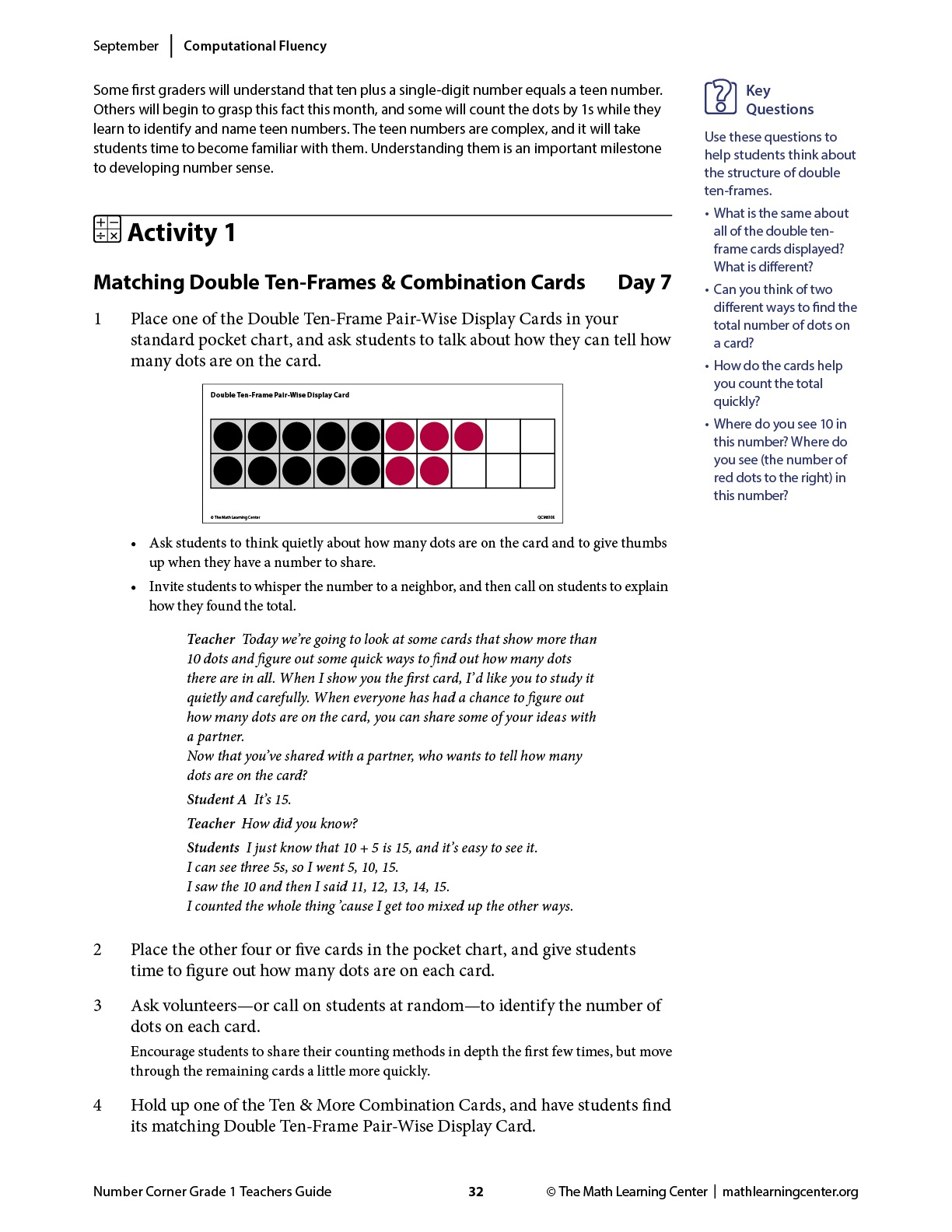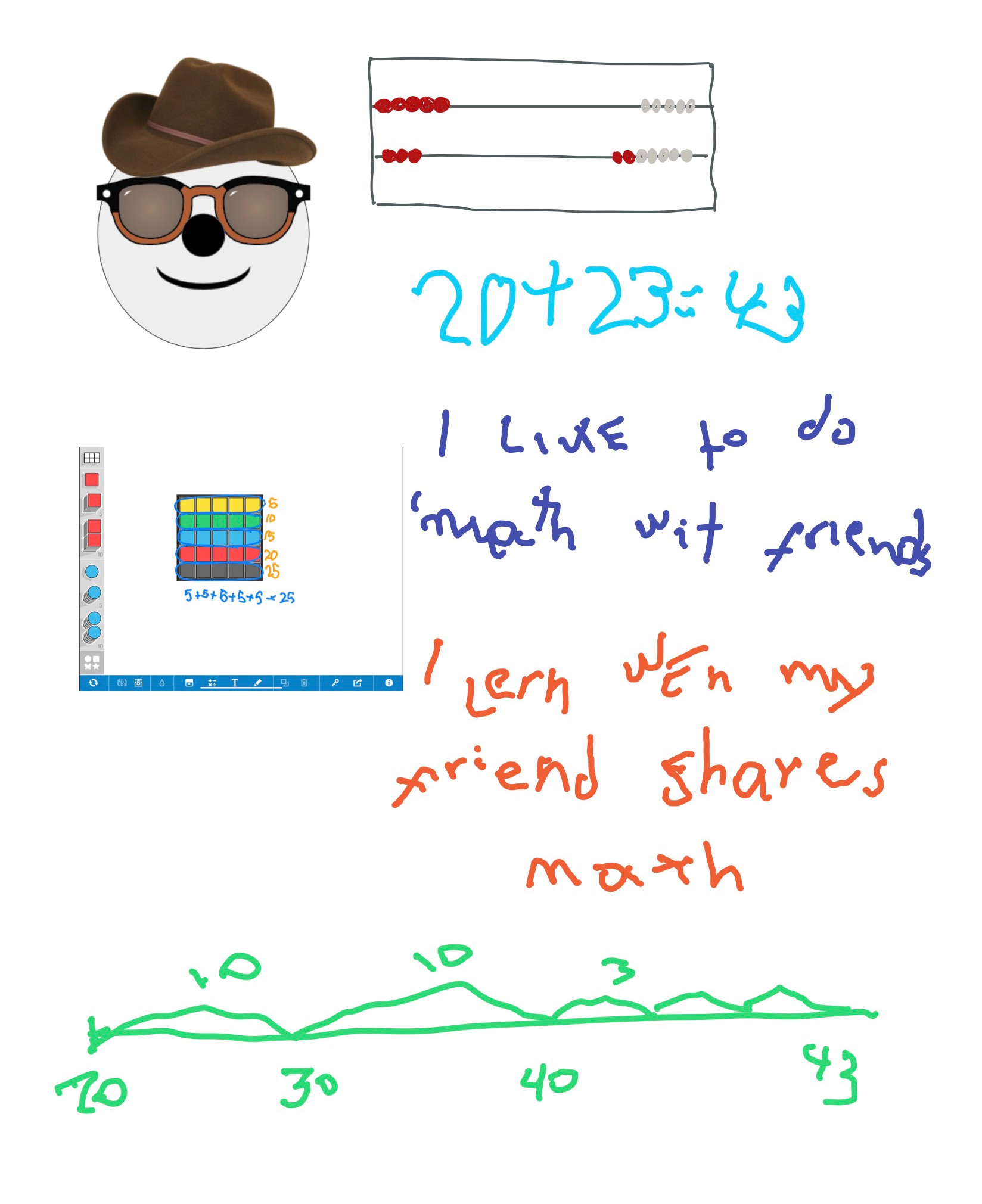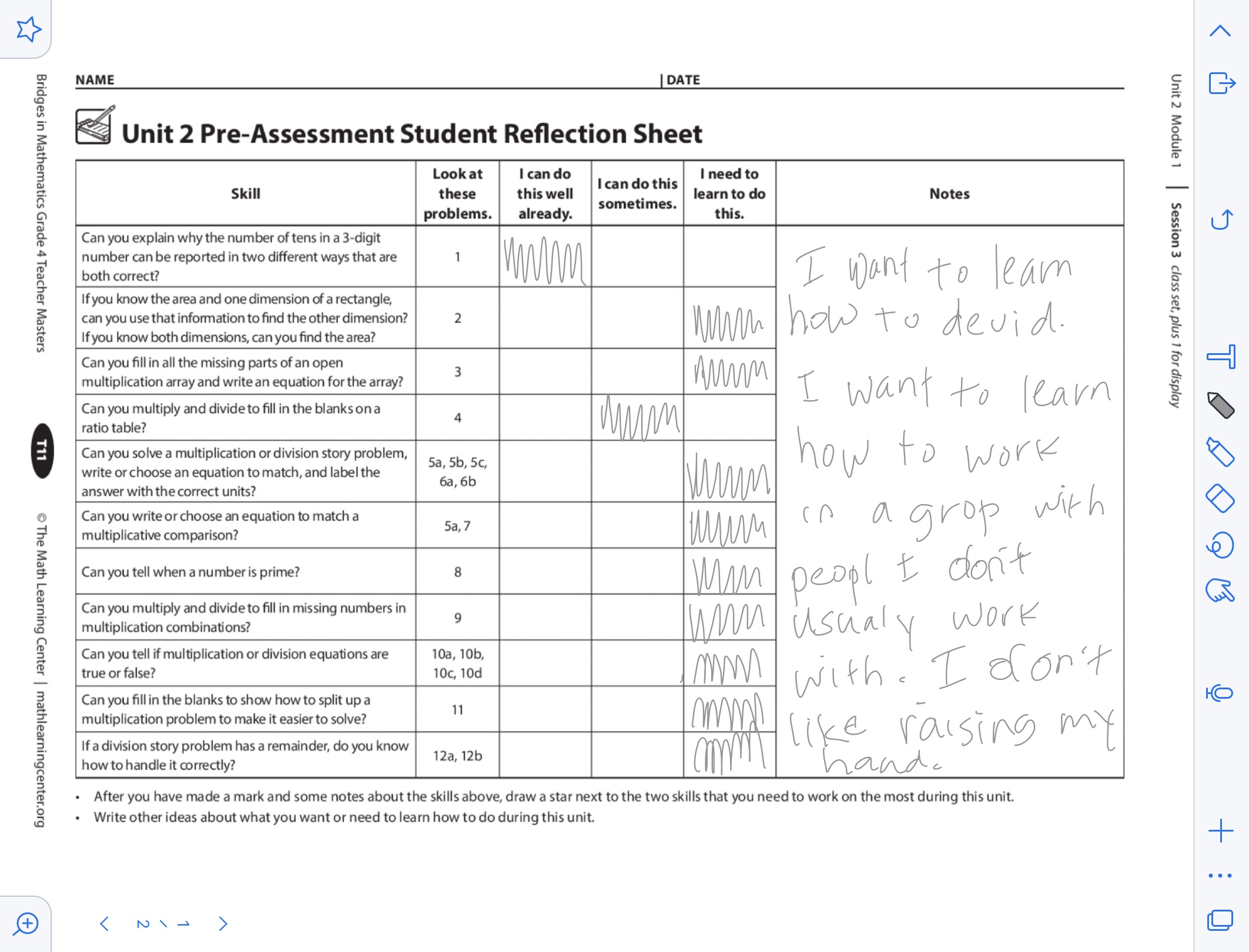Student Math Identities Inform Teaching Practices
The start of a new school year is the perfect time for teachers to get to know their students as mathematicians. Exploring students' math identities means paying attention to their beliefs about what it means to be “good at math” and their perceptions of their own ability to do mathematics. We want to share some of the possibilities within the Bridges curriculum that will help teachers know their students as mathematicians.
Kindergarten
Get to know students by nestling in with them during Work Places. Think about what observation might reveal about their math identity. Listen with curiosity, ask questions, and pay attention to how students interact in the learning community. How do they engage in Work Places? Do they have the confidence to gather Work Place materials on their own? Are they exploring mathematical ideas? Do they use tools appropriately to answer a math question? Do they see themselves as doers of mathematics?
First Grade
Number Corner provides an excellent opportunity to learn about how students approach mathematical ideas and the Math Practices. During whole-group discussions, listen to students’ ideas, strategies, and predictions. Allow the thinking to come from them. Consider using the Key Questions found in the Number Corner Teacher Guide to elicit a deeper discussion. These conversations can be a window into students’ beliefs and attitudes about mathematics.

Second Grade
Students can plan, create, and write about their own variation of a favorite Work Place game. Allowing students to create a Work Place extension offers them an opportunity to connect the content to their interests. This can help you learn more about students' beliefs in their mathematical ability.
Third Grade
As an extension to Module 1 in Unit 1, ask students to imagine their People Glyph as a character. What would they want their glyph to know about them as mathematicians? Asking this question may help you to learn more about your students from their point of view. This activity can also reveal more about students’ preferred models, strategies, and problem-solving tools.

Fourth Grade
The Pre-Assessment Student Reflection task is a natural opportunity for students to be introspective mathematicians. Looking at data from the pre-assessment may help them recognize the learning expectations for the unit. To get a glimpse of how students see themselves as mathematicians, teachers might consider having students use the “Notes” space on the Reflection Sheet to write about their goals for learning. Students can reflect on their habits of mind by thinking about how they engage with mathematics. Teachers can note the language used and whether it reflects a fixed or growth mindset.

Fifth Grade
tudents can use the Whiteboard App, slide deck, or other media to capture their favorite math activity so far in the school year. Making this an open-ended activity will likely give teachers a sense of who students are as mathematicians—their interests, their strengths, and perhaps their go-to strategies for solving problems. Whether it’s a Work Place game or a Calendar Grid activity from Number Corner, students’ choices can reveal a great deal about their math identity.
The grade-level possibilities we highlighted give teachers opportunities to understand their students’ mathematics identities and learning preferences. We believe that building awareness of who students are allows educators to make intentional choices about instructional practices. Let us know how you are getting to know your young mathematicians, and stay tuned for future posts in this series!
This article was originally posted on September 23, 2021.
